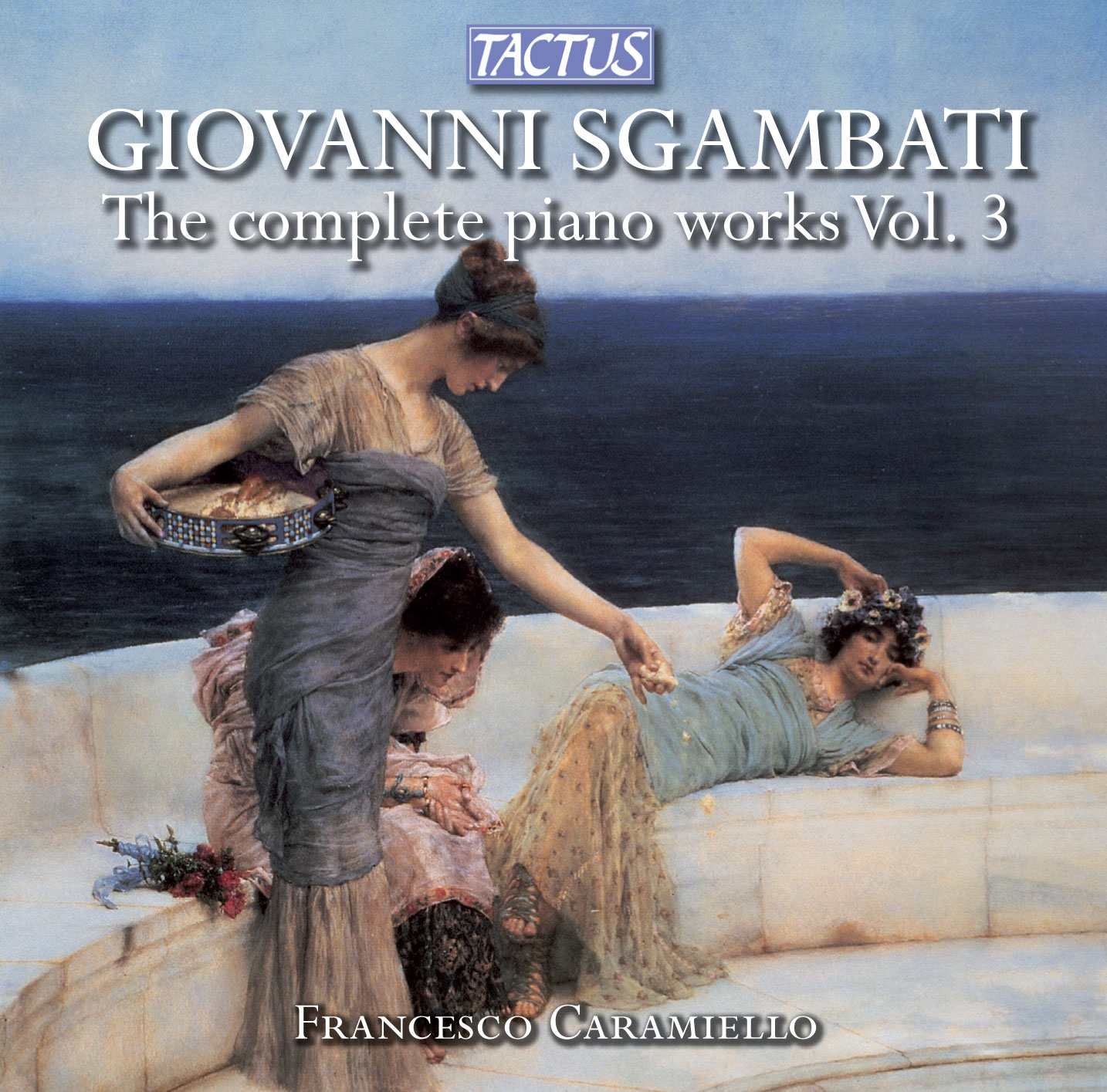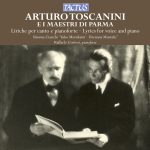Giovanni Sgambati (1841-1914)
The Quattro pezzi di seguito op. 18 were composed separately, but collected and published in 1882.
The virtuosic Preludio is followed by Vecchio Minuetto, an example of nostalgic, amused stylisation of ancient dances, in keeping with the custom of that period.
The dazzling Toccata is a humorous perpetual motion that was performed quite often by the great virtuosos of those days and was includedin the repertory of outstanding pianists such as the young Claudio Arrau.
A more profound piece is Nenia, that Emil von Sauer defined “the most pleasant, elegant composition in the best contemporary piano literature”.
Nowadays these pieces are no longer performed in concert halls.
In Italy, actually, even in Sgambati’s time, the public’s reception of his piano pieces was often rather wary.
Elsewhere, on the contrary, the public showed, and still does today, more interest and appreciation.
In 1928, Attilio Brugnoli wrote, in La musica pianistica italiana dalle origini al ‘900, that “my performance of Sgambati’s major works abroad has always been a real revelation”, and added that he was surprised at the fact that in Italy these works were not given an equally warm reception.
The autograph manuscript, preserved at the Biblioteca Casanatense of Rome, of the Fogli volanti op. 12, composed between 1879 and 1880, includes fourteen short pieces.
In the last page of the manuscript, the composer wrote the words “può continuare” (“it may continue”), as if he wished to stress the cycle’s lack of unitariness.
Moreover, there are several possibilities of assembly: the finalone, which appears in the printed version, includes only eight pieces: Romanza, Canzonetta, Idillio,Marcia, Vecchio castello (Croquis), Epanouissement, Combattimento, and Campane a festa (Epitalamio).
They are delicate, elegant pieces, reminiscent of Schumann (Romanza), Tchajkovsky (Canzonetta), and Liszt (Campane a festa), conceived in the lied spirit, with a constantly original piano elaboration.
An example of this is the mournful Canzonetta, where the composer does not confine himself to assembling a piece with an elegant melodic pattern, but doubles the melody in repeated reverberations, entrusting both the voices to the right hand only, almost as in a canon.
A subsequent attempt to retrieve the six excluded pieces in another collection entitled Fantasie alpestri, did not convince the composer, maybe because the only pieces that deserved this title were Scherzino (to which he would have given the title Agnelletto sul prato) and Fantasia per il piffero.
These short pieces, particularly the tender Confidenze and the siciliana called Serenatina interrotta, seem to anticipate the piano aphorisms of Alfredo Casella.
There follows a sonorous Canto di guerra, which is only a draft, and the inventive Diavoleria, a very short, experimental toccatina characterised by sharp dissonances and rhythmic shifts.
Perhaps this last piece was considered too bold by the composer, who repented and eliminated it.
It remains, however, in its lightning brevity, the most original fragment among the expunged and retrieved pieces.
The compact disc is completed by Romanza in la maggiore, published by Manganelli in 1878, a piece meant for drawing-room performances, and two transcriptions of pieces from Sgambati’s symphonic and chamber-music repertory: Serenata, fourth movement out of five in the PrimaSinfonia in re maggiore op. 16, transcribed by Sgambati, and Scherzo, from the Quartetto in do diesis minore op. 17, transcribed for piano for four hands by Engelbert Humperdinck (1854-1921)
Tracklist
Sgambati, Giovanni
4 pezzi di seguito, Op. 18
1 - No. 1. Preludio in A-Flat Minor (2:43)
2 - No. 2. Vecchio minuetto in D-Flat Major (6:03)
3 - No. 3. Nenia in E-Flat Minor (6:53)
4 - No. 4. Toccata in A-Flat Major (4:08)
Fogli volanti, Op. 12
5 - I. Romanza in A-Flat Major (4:20)
6 - II. Canzonetta in C Minor (3:42)
7 - III. Idillio in E-Flat Major (1:00)
8 - IV. Marcia: Humoresque (1:03)
9 - III. Idillio in E-Flat Major (da capo) (1:02)
10 - V. Vecchio Castello in F Minor (3:35)
11 - VI. Epanouissement in D-Flat Major (1:22)
12 - VII. Combattimento in A-Flat Minor (1:25)
13 - VIII. Campane a festa in D-Flat Major (2:23)
Romanza in A Major
14 - Romanza in A Major (3:42)
Symphony No. 1 in D Minor, Op. 16 (version for piano)
15 - Symphony No. 1 in D Minor, Op. 16: Serenata (version for piano) (6:09)
String Quartet in C-Sharp Minor, Op. 17 (arr. E. Humperdinck)
16 - String Quartet in C-Sharp Minor, Op. 17: Scherzo (arr. E. Humperdinck) (4:11)
Fantasie alpestri
17 - No. 1. Scherzino (1:11)
18 - No. 2. Confidenze (0:59)
19 - Scherzino da capo (0:40)
20 - No. 3. Fantasia per il piffero (0:51)
21 - No. 4. Serenatina interrotta (1:16)
22 - No. 5. Canto di guerra (0:49)
23 - No. 6. Diavoleria (0:58)
- Composer: Giovanni Sgambati (1841-1914)
- Performers: Francesco Caramiello – piano (with Pasquale Russo on “Scherzo”
- Historical Period: Romanticism
- Code: TC 841903
- Edition: JUNE 2011
- Barcode: 8007194104998
- Set: 1
- Total tracks: 23
- Total duration: 01:01:36






